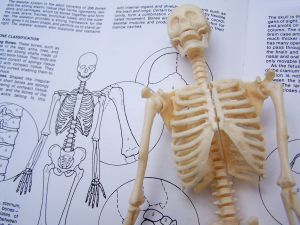 by Witold Fitz-Simon
The standard wisdom is that it is only the muscles of the human body that contact and create movement, but it turns out that this is not entirely true. About ten years ago, research began to show that fascia contained myofibroblasts, cells that have the ability to contract when stimulated.
by Witold Fitz-Simon
The standard wisdom is that it is only the muscles of the human body that contact and create movement, but it turns out that this is not entirely true. About ten years ago, research began to show that fascia contained myofibroblasts, cells that have the ability to contract when stimulated.
What is Fascia?
Fascia is the fibrous connective tissue of the body. It surrounds all our muscles, bones, ligaments, tendons and organs, and provides the tensile structure of the body, providing the medium that transfers the elastic pull of our muscles. It holds different parts in place, for example suspending organs from the spine, and allows different parts of the body to move around by creating distinct layers of tissue with surfaces that can slide and glide over each other. Fascia is made up of tight bundles of collagen fibers which are extremely resistant to lengthening. When a person is young and/or healthy, the fibers, bundles and layers are neatly aligned and discrete. As a person ages and the overall good use of their body deteriorates, these fibers can become frayed and stuck together, and can even get shorter. What used to aid and support movement can create limitations and problems. Once fascia gets to that state it can become very difficult to change. It takes serious intervention: either the forceful rearranging of deep tissue massage, or the sustained mindfulness and intention that the Alexander Technique can provide.
Along with collagen fibers, fascia contains extracellular matrix (the stuff that is in between the cells) and fibroblasts, cells that create the extracellular matrix and collagen. The myofibroblasts that have been discovered in fascia are found all over the body and are used in the healing of wounds. As they contract, they pull the edges of the wound together. In fascia, they are found in greater concentration in areas where the tissue is under greater physical stress.
From an article written by Joseph E. Muscolino, author of “Kinesiology, The Skeletal System and Muscle Function,” published in the Fall 2008 issue of Massage Therapy Journal:
“As great and greater tensile forces are placed upon the fascia, more and more myofibroblasts develop from the normal fibroblasts of the fascial tissue. For this reason, myofibroblasts are also known as ‘stress fibers.’ These myofibroblasts can then create an active pulling force that the fascial tissue is experiencing. For this reason, myofibroblasts are found in the greatest concentration in fascial tissues that have been injured and are undergoing would healing. Fascial tissues with high concentrations of myofibroblasts have been found to have sufficiently strong force to impact musculoskeletal mechanics—that is, their active pulling forces are strong enough to contribute to movement of the body.”
Slow and Steady Contraction
The contraction of muscle tissue can be fast-moving, with the ability to respond almost instantaneously to triggers, and is governed directly by the nervous system, either non-consciously through the reflexes of the spinal chord, or directly from conscious intention. The contraction of these myofibroblasts in our fascia is very different in quality, building up over a period of minutes to hours, and was found to be stimulated by changes in hydration in the extracellular matrix of the tissue as a result of stretching. This means that the contraction of fascia would not be directly influenced by the kind of mental intention that direction in the Alexander Technique mode. It does mean, however, that fascia is not as inert as one might have heretofore thought, and this new knowledge gives us a different insight into the mechanism of change that happens over time as the result of continuously applying constructive, conscious direction to the way we use ourselves with the Alexander Technique.
For those more technically-minded, two studies on the topic can be found here and here.
[author] [author_image timthumb='on']http://www.acatnyc.org/main/wp-content/uploads/2014/01/After-crop1.jpg[/author_image] [author_info]WITOLD FITZ-SIMON has been a student of the Alexander Technique since 2007. He is certified to teach the Technique as a graduate of the American Center for the Alexander Technique’s 1,600-hour, three year training program. A student of yoga since 1993 and a teacher of yoga since 2000, Witold combines his extensive knowledge of the body and its use into intelligent and practical instruction designed to help his students free themselves of ineffective and damaging habits of body, mind and being. www.mindbodyandbeing.com[/author_info] [/author]
